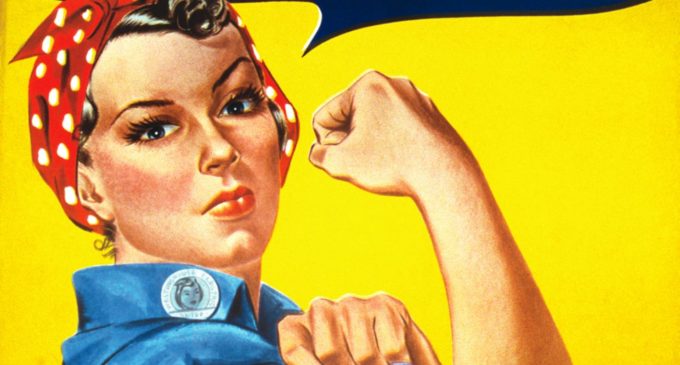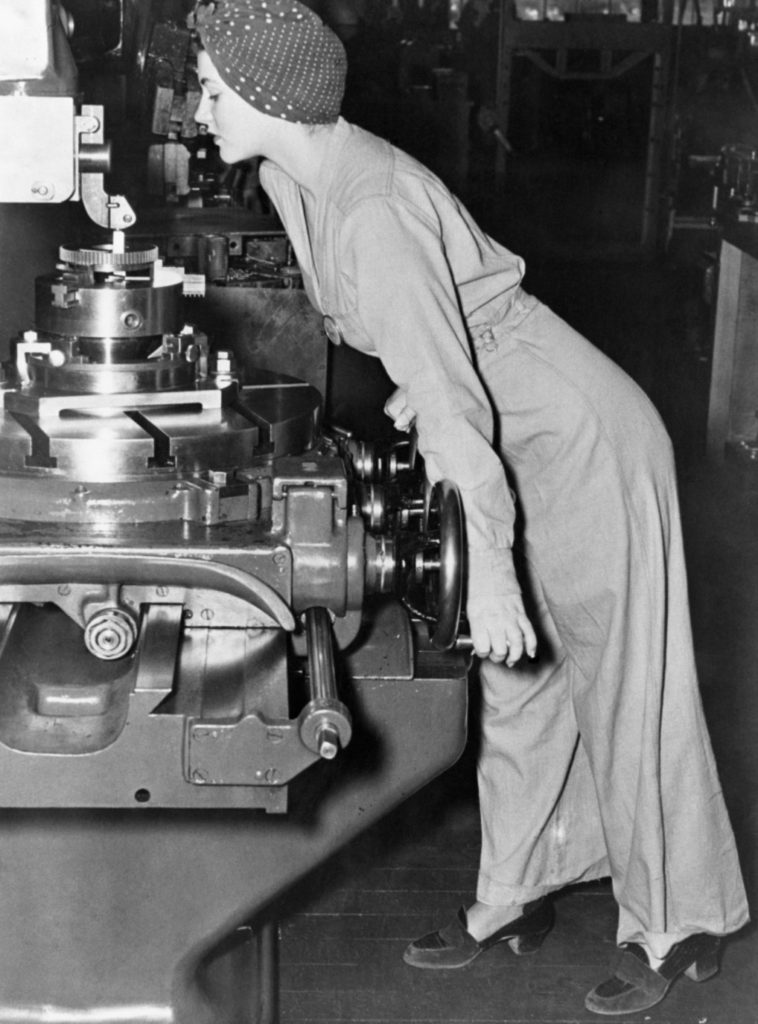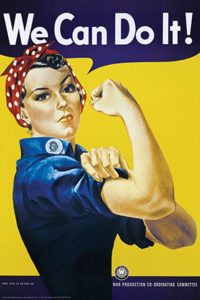Original Rosie the Riveter Dies

MEDIA SPOTLIGHT – The original ‘Rosie the Riveter’ – Naomi Parker Fraley – died January 20, 2018, in Longview, WA.
“Over the years, a welter of American women have been identified as the model for Rosie, the ware worker of 1940s popular culture who became a feminist touchstone in the late 20th century,” the New York Times noted in her obituary.

A 1942 photograph of Naomi Parker Fraley that was the likely inspiration for the Rosie the Riveter poster, according to the New York Times. (Getty Images)
“Unsung for seven decades, the real Rosie the Riveter was a California waitress,” according to the Times. Fraley had worked in a Navy machine shop during World War II.
Fraley’s claim was “eclipsed by another woman’s” and she was unrecognized for seven decades until 2016.
“It turns out that almost everything we think about Rosie the Riveter is wrong,” Seaton Hall University professor James Kimble told the Omaha World-Herald in 2016 after searching for six years for the original woman.
Geraldine Hoff Doyle was a Michigan woman whose “innocent assertion that she was Rosie was long accepted,” the Times noted. Doyle’s claim “was promulgated further through obituaries, including one in the New York Times.” She had worked briefly as a metal presser in a Michigan plant.
“The confusion over Rosie’s identity stems partly from the fact that the name Rosie the Riveter has been applied to more than one cultural artifact,” the Times explained.
The first was a wartime song of the same name, and that “Rosie” was Rosalind Walter, a Long Island woman who was a riveter on Corsair fight planes. Norman Rockwell’s 1943 painting for the cover of the Saturday Evening Post depicted “a muscular woman in overalls” with the name Rosie on her lunchbox, a rivet gun on her lap and a copy of ‘Mein Kampf’ crushed underfoot. Rockwell’s model was Mary Doyle Keefe of Vermont.
There was an industrial poster by Pittsburgh artist J. Howard Miller displayed at Westinghouse Electric Corporation plants showing a young woman in a work shirt and polka-dot bandanna flexing her arm and declaring, “We can do it!” That poster was all but forgotten until the 1980s when a copy became a feminist symbol and it was put on t-shirts, coffee mugs and posters.
 A decade later, Doyle saw the poster and thought it resembled her. The news media began identifying her as the inspiration for Miller’s Rosie.
A decade later, Doyle saw the poster and thought it resembled her. The news media began identifying her as the inspiration for Miller’s Rosie.
However, Kimble’s six-year search for the original Rosie revealed it was Fraley.
Born in Oklahoma in 1921, Fraley was raised in six states before settling in Alameda, CA.
After Pearl Harbor, Fraley and her sister went to work at the Naval Air Station and started drilling, patching airplane wings and riveting at the machine shop. She was photographed with her hair tied in a bandanna for safety at her lathe. Fraley clipped the photo from the newspaper.
In 2011, the sisters attended a female war workers reunion at the Rosie the Riveter / World War II Home Front National Historical Park in California. The photo was prominently displayed and captioned as Doyle.
“I knew it was actually me in the photo,” Fraley told the Oakland Tribune in 2016. She wrote to the National Park Service, which replied by asking for help in determining the true identity.
“I didn’t want fame or fortune,” Fraley told People magazine in 2016. “But I did want my own identity.”
Kimble searched the Internet, books, old newspapers and photo archives for a captioned copy of the image. He found a 1942 copy with the original caption: “Pretty Naomi Parker looks like she might catch her nose in the turret lathe she is operating.”
When Kimble visited Fraley in 2015, she showed him the newspaper photo she had saved. More indications, such as finding the photo appearing in the Pittsburgh Press in artist Miller’s hometown in 1942, added probability.
When asked by the World-Herald in 2016 how it felt to be known publicly as Rosie the Riveter, Fraley responded, “Victory!”
Editor’s Note: Articles in MEDIA SPOTLIGHT are excerpts from publications or broadcasts, which show the industry what the public is reading about fasteners and fastener companies.


There are no comments at the moment, do you want to add one?
Write a comment